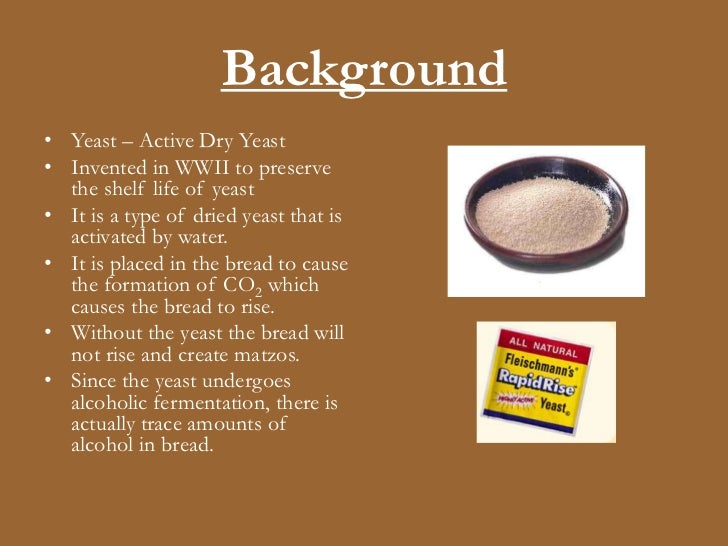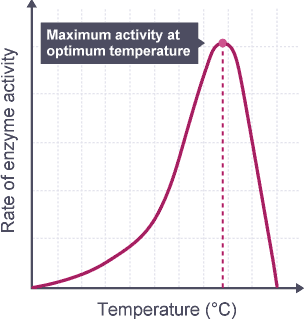
10 línur How yeast fermentation process changes with temperature. When fermenting the dough depending on the stage of fermentation eg.

But push the activation temp above 140F 60C and youll kill the yeast before it can even wake up.
Bread yeast fermentation temperature. Optimum temperature range for yeast to grow and reproduce at dough fermentation stage. 70 F80 F 21 C27C Recommended water temperature for bread machines. This lab demonstration investigates the relationship between temperature and rates of fermentation in bread yeast.
Could be used to teach about controlled ex. Adding too much salt will hydrate and starve the yeast. When making yeast bread you should ensure the water temperature is between 80-90 degrees F.
To control the temperature you should bake with an oven. Make sure you set the oven heat at the lowest point for 2-3 minutes. After that turn it off.
The temperature of the fermenting medium also exerts a significant effect on the yeasts gassing rate. As a general observation the fermentation rate increases with a rise in temperature up to a maximum of perhaps 100 to 105 F 38 to 41 C. The rates of carbon dioxide generation of.
The best temperature for growth is from 110F to 115F but the best products for making bread are formed from 80F to 95F although the growth rate achieved is smaller. If bread dough is kept colder than this temperature range the yeast will not grow sufficiently. After kneading the flour place it in a large oiled bowl and cover it with a damp towel or a wrap for one to two hours to allow the yeast to grow.
The optimal temperature for the fermentation process is within a range of 75-85 degrees Fahrenheit. Lower temperatures cause the dough to take a longer time to ferment while higher ones produce unsavory flavors. 10 línur How yeast fermentation process changes with temperature.
Yeast activity increases in a ratio. Cold temperatures can keep yeast stable and dormant for a period of time. Warm temperatures wake yeast up and provide it with an environment in which it can activate.
If temperatures rise too high the yeast will die. In the ideal temperature range and in the presence of sugars yeast breaks down the glucose C 6 H 12 O 6 into ethyl alcohol or ethanol CH 3 CH 2 OH and carbon dioxide CO 2. There are many factors involved in the fermentation.
However the yeast stops creating carbon dioxide when the temperature reaches 26 degrees celsius 788 degrees fahrenheit This is the temperature in which the yeast would stopped its activity. Most likely the yeast in this graph produced very small air bubbles due to the fact that the warmer the air bigger the air bubbles would are. The temperature at which your yeast blooms can affect the flavor of your bread.
Yeast reactivates best between 110F and 130F 43C and 54C. But push the activation temp above 140F 60C and youll kill the yeast before it can even wake up. You dont need to use fat or baking paper since the tray its hot the bread wont stick to it.
Bake for 30 mins with lid cover at 220 ºC425 F. After 30 mins take the lid off and bake for another 20-30 mins depending on the flour at 200 ºC 390 F. Previous studies showed that the optimum temperature for fermentation or yeast growth 2830 C ensures efficient fermentation.
However low-temperature fermentation may increase the synthesis of secondary aromas Birch et al 2013. Water at 81 to 100F is the optimum temperature range for the fermentation process. Water at 95F is the fermentation temperature that yields the best result.
Water at 140F or higher is the kill zone for yeast. At temps like this or higher you will have no viable live yeast left. Yeast is a single-cell microbe that has important roles in bread-making.
Leavening and gluten development. When combined with flour and water to make bread dough enzymes in the yeast break down starch of flour into sugar. The yeast uses sugar as their food and gives off the byproducts carbon dioxide and alcohol ie.
Lager-type beers are fermented quite cold as well in a step often called lagering. The temperature of the fermenting beer is held in the neighborhood of 34-40F during this phase and the yeast continues to work on the beer. Sintax Sep 28 14 at 2210.
Yeasts tend to ferment most efficiently at 80F 90F 27C 32C. At this temperature range they consume sugars from the dough with the least amount of byproduct and will give bread a milder flavor. Bacteria strains tend to ferment efficiently at temperatures outside of those ranges and this produces byproduct which affect flavor.
The influence of fermentation temperatures 8C 16C and 32C and yeast levels 2 4 and 6 of the flour on the formation of volatile compounds in the crust of whole meal wheat bread was investigated. The fermentation times were regulated to optimum bread height for each treatment. When fermenting the dough depending on the stage of fermentation eg.
Leavening initial fermentation intermediate fermentation final fermentation etc you can use a refrigerated 5 fermentation a room temperature 25 fermentation or you can use a fermentation oven or oven set at a higher temperature 28 to 38 to.